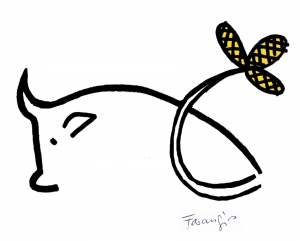Why do ears of grain grow out of the raised bull’s tail?
No bull raises his tail straight up, nor does one or three ears of grain grow at the tip of any bull’s tail. What type of worldview do we see in this symbolism that merges animal with plant life? The image of the “ear of grain” and the early philosophical conceptions tied to this symbol, held a central meaning in the early Iranian civilisation and their religious ideas. A basic concept they held was represented in their equation of growth (as pertaining to plants) and birth (in animal life). » read the full article as a PDF

